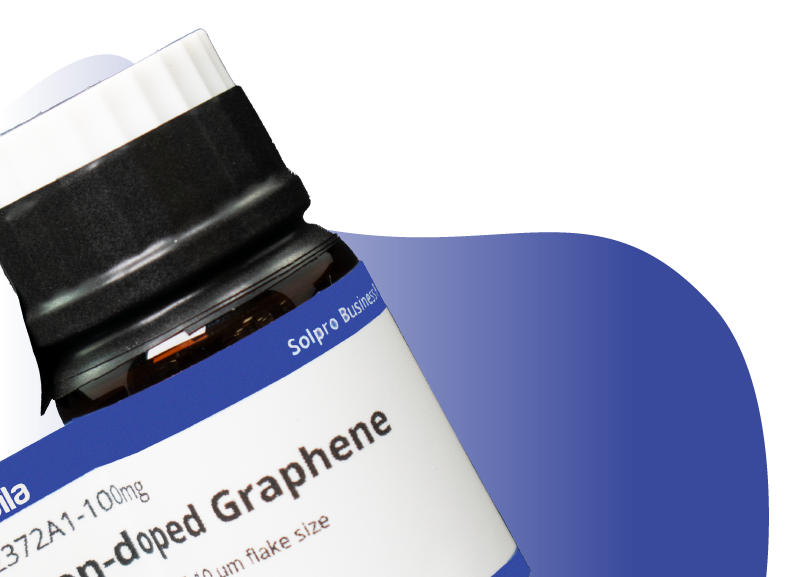Graphite Nanopowder
CAS Number 7782-42-5
2D Materials, Anode Active Materials, Battery Materials, Graphene Materials,High Purity (>99.9%) Graphite Nanopowder, < 50 nm
A naturally occurring form of crystalline element carbon with versatile applications from lubricants to batteries
Overview | Product Information | Related Products | Technical Support
Graphite nanopowder (CAS number 7782-42-5) is one of the most chemically and biologically stable forms of crystalline carbon. With an average particle size of 50 nm, graphite nanoparticles possess different properties compared to bulk material.
The unique physical and chemical properties of graphite nanopowder include refractoriness, good thermal stability and mechanical integrity at high temperatures, high thermal shock resistance, high thermal and electrical conductivity, low thermal expansion, and good chemical resistance. These characteristics make graphite nanoparticles valuable energy materials for applications such as lithium-ion batteries (LIBs), supercapacitors, and catalyst supports. Additionally, the work function of graphite nanoparticles can be tuned through edge termination, enabling localized control over lithiation behavior in LIBs and enhancing performance in other applications.
High Purity
(>99.9%)
High Structural Strength
High thermal and electrical conductivity
Stable Properties
Most stable form of carbon
Worldwide Shipping
Quick and reliable shipping
*For larger orders please email us to discuss prices
General Information
| CAS Number | 7782-42-5 |
|---|---|
| Chemical Formula | C |
| Synonyms | Graphite, Graphite nanoparticles |
| Classification or Family | 2D semiconducting materials, Carbon nanomaterials, Graphite, Battery Materials, Organic electronics |
| Color | Grey to black powders |
Product Information
| Purity | 99.9% |
|---|---|
| Size | < 50 nm |
| Conductivity (s/m) | 1100 – 1600 |

MSDS Documents
Graphite Nanopowder MSDS Sheet
References
- An eco-friendly solution for liquid phase exfoliation of graphite under optimized ultrasonication conditions, J. Morton et al., Carbon, 204, 434-440 (2023); DOI: 10.1016/j.carbon.2022.12.070.
-
Coherent interfaces govern direct transformation from graphite to diamond, K. Luo et al., Nature 607, 486–491 (2022); DOI: 10.1038/s41586-022-04863-2.
-
Recent trends in the applications of thermally expanded graphite for energy storage and sensors – a review, P. Murugan et al., Nanoscale Adv., 3, 6294-6309 (2021); DOI: 10.1039/D1NA00109D.
Related Products
We stock a wide range of 2D materials available to purchase online. Please contact us if you cannot find what you are looking for.



